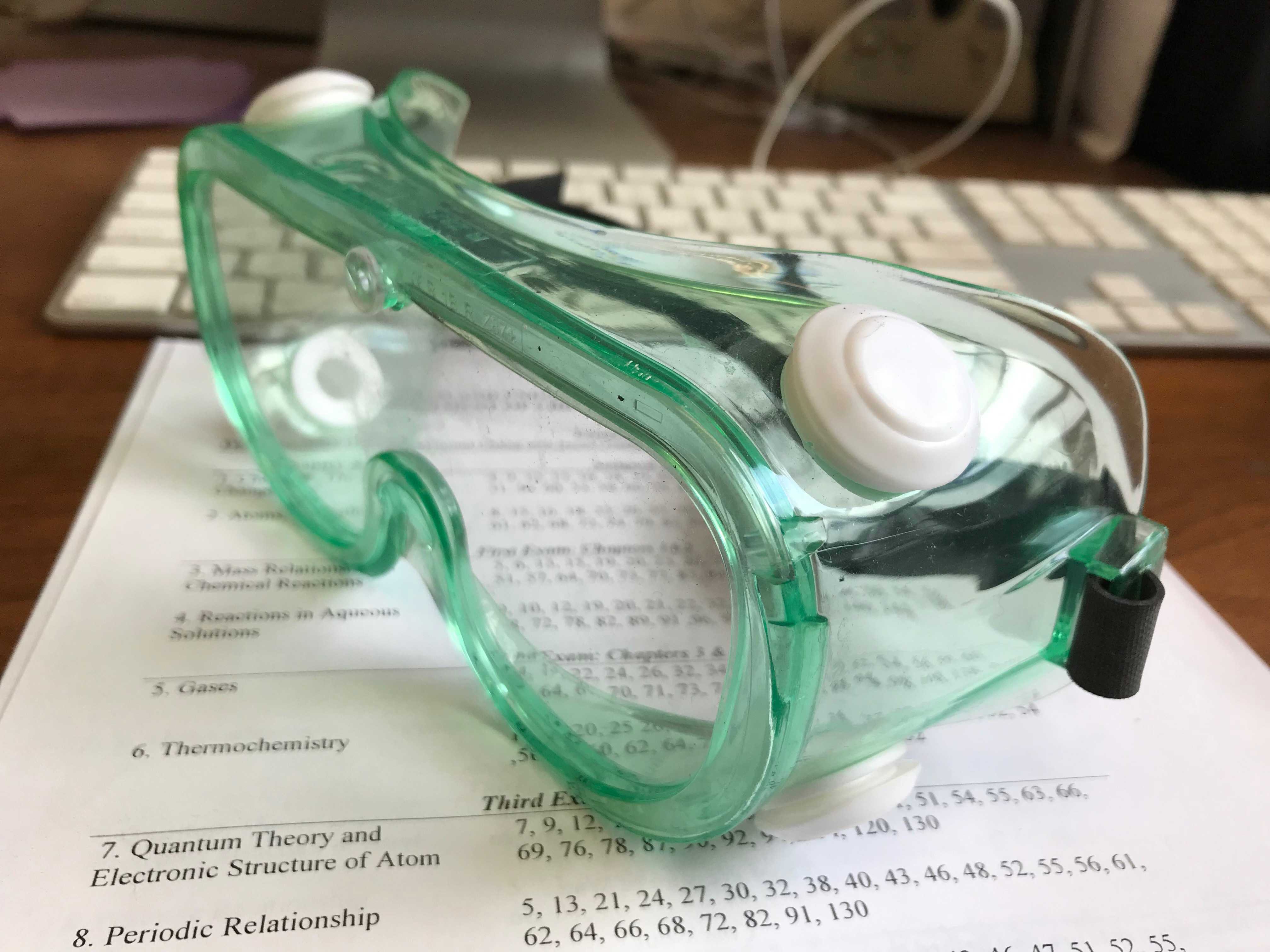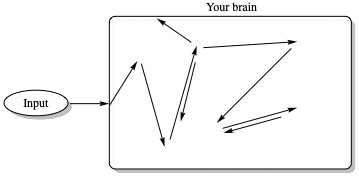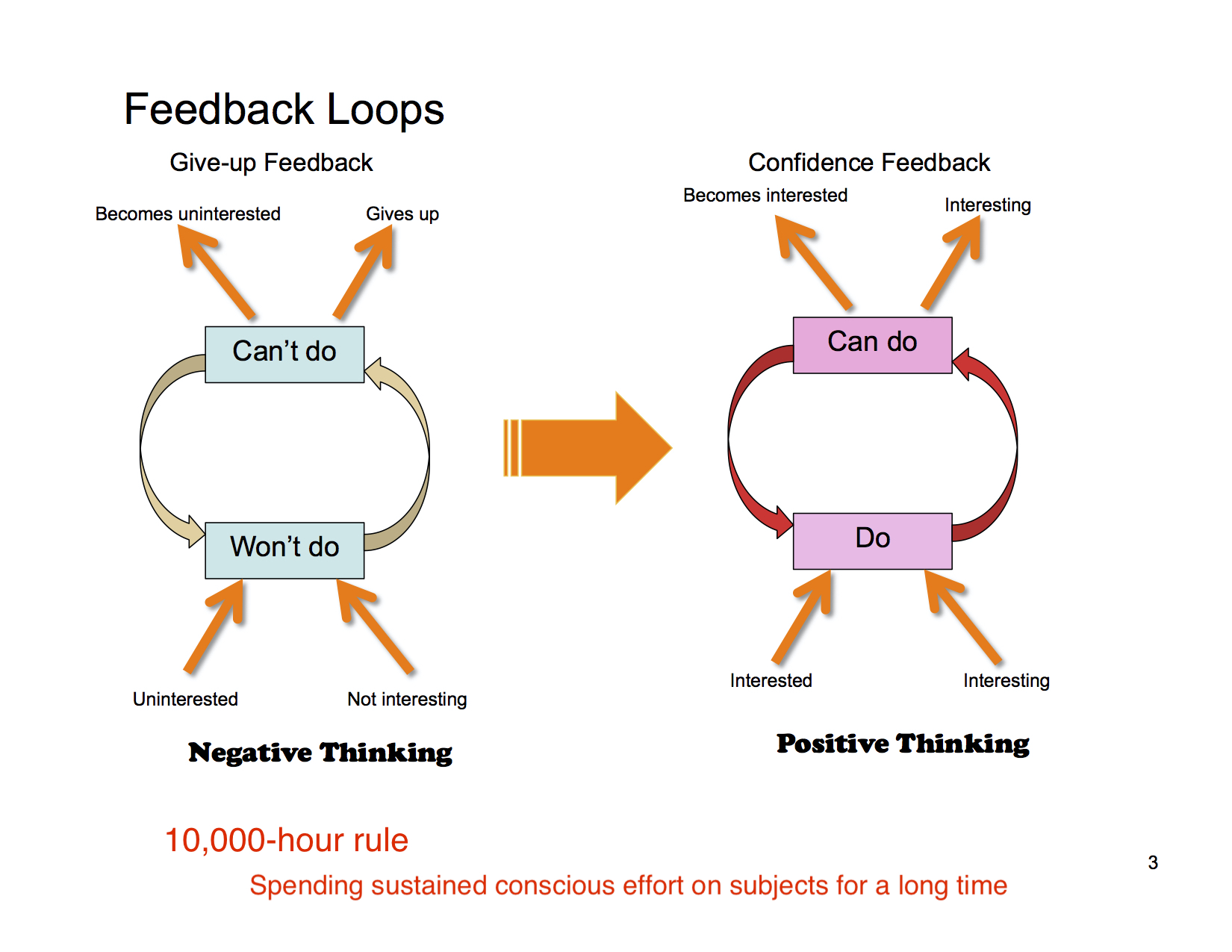This Course
My email address is: Nikita.Matsunaga@LIU.edu
Next 14 weeks, you will be challenged to learn about foundations in chemistry.
Safety
Chemistry is a laboratory science. The lab is an integral part of this general chemistry course as well. Unlike other courses in the university, chemistry lab can become dangerous for students if proper care is not taken. For this reason, first and foremost, we require each of you to wear a safety goggle during the entire laboratory period. You must have them on at all times when you walk into the lab.
Due to safety issues, such as spilling and sputtering of chemicals, you should wear proper attire. For example, having open-toe shoes and wearing a tank top may not be too wise in the lab. Lab coat is not required, but if you wish, you can certainly wear them.

The safety goggle is sold for $5 in the stockroom located in WL 118.
We use our own lab manual, written by Dr. Ed Donahue. Each lab is consist of prelab and lab report. The prelab is an excercise pertinent to the experiment and its concept. You must hand in the prelab assignment before the lab starts! Either your teaching assistant (TA) or I will collect them. If you don't have it done, you get 0 for the prelab. The lab report must be handed in on the same day that you do the lab in my lab.
Lab manual is also available in the stockroom of WL 118 for $25.
You can also purchase the electronic copy of the manual for $20 from Amazon.
Fast paced
We go through 12 chapters in the next 14 weeks! It is a lot! So, it is absolutely imperative for you to keep up with the pace of the lecture. After several chapters, we give hourly exam to test your knowledge. Many students find that the pace is rather fast and hectic, and some have hard time keeping up with the studying. Each chapter is 20 to 30 pages long, and at the end of chapter there are usually little over 100 questions. Each section of a chapter has questions related to the topic. At the very end of the questions, questions called Additional Problems, are more challenging, and they are very important in strengthing the concepts in the chapter.
You have to read the textbook carefully, understanding all it says. There are many way to study, but if you are fast reader. You can read through the entire chapter, without doing much first, trying to get overall picture of things. Then, go through it the second time, doing examples and work out problems. For a slow reader, like myself, reading once might suffice, but when you go through, you must take time to go through everything, taking notes, understanding, and working out problem.
Upon reading the textbook, you must go through examples, that are already worked out for you, as seen in the picture below. Since it is already worked out, it usually doesn't pose great challenge to you. If it does, read the section preceeding the example, again! Once you understand the worked out example, you should try the Practice Exercise, for which there is no answer. If you are able to do without much problem, you can proceed to the next section. If you can not solve the problem, you should look at the example again, and if it helps, you should read the section again. It is an iterative process, you have go through reading, examples, practice excercise

Your final exam
Final exam is cumulative and comprehensive. However, we ask you questions very similar (or exactly often) to the questions appeared in the syllabus. We usually ask two questions or so from each chapter. Again, keeping up with the reading and studying the chapters will help you.
Grading
Lecture Grade:| Average of the first two exams | Final Exam | Homework | Lab |
|---|---|---|---|
| 35% | 35% | 5% | 25% |
Lab Grade: I will count all the labs for attendance and performance on the prelabs and lab reports.
What's learning?
Cognitive process without apprehension! Practice makes it perfect! What I mean by is that cognition seems to be neuropath that some neural paths and their patterns that pass through the brain. When you see some hard mathematical equation, your thought is apprehension. Your "thought" is looking for a path. It might be like the following:

When you start learning how to ride bicyle, but today you can ride it without any thought involved. You know the old saying, "Practice makes it perfect," is supported by neuroscience!
Another aspect of learning is summarized in the following:
